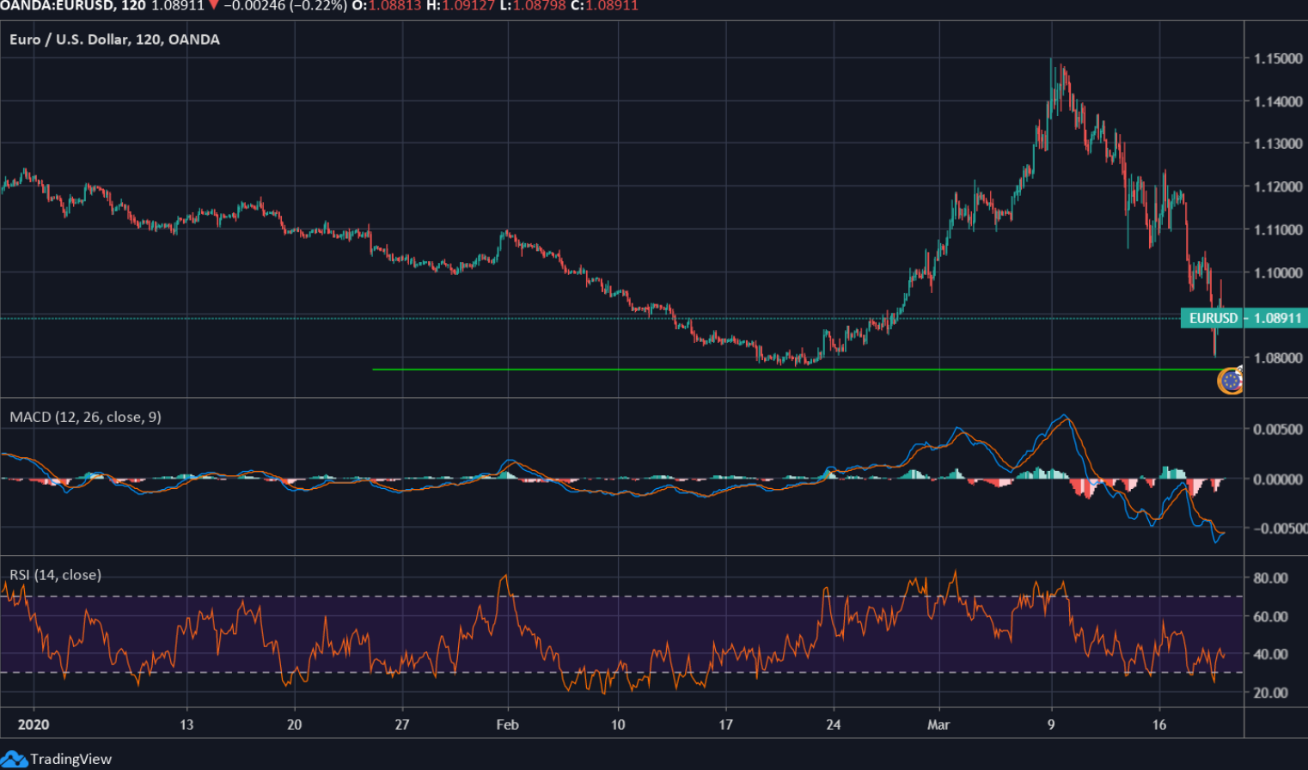Stocks hit a new low on Wednesday as investors worried on governmental response to the pandemic crisis wouldn’t be enough. A key market-wide circuit breaker was triggered for the second time this week as volatility continued to roil Wall Street.
EQUITIES
Impact from the outbreak has seen a roller coaster market volatility as Dow index moves up and down by 1,000 points or more every trading day for more than a week now.
On Wednesday, major benchmark closes as follow:
S&P 500 Index : $2,398.10, down -131.09 points or -5.18%
Dow Jones Industrial Average : $19,898.92, down -1,338.46 points or -6.30%
Nasdaq Composite Index : $6,989.84, down -344.94 points or -4.70%
European exchanges are not excluded in recording losses, with London's FTSE 100 down -4.05%, Germany's DAX -5.56% and France's CAC 40 lose -5.94%. Italy's closed -1.27% lower and pan-European Stoxx 600 index shed -3.92%
Asian markets also recorded loses with an exception to several. Singapore and Nikkei 225, open higher today gaining 0.17% and 0.52% respectively. Australia's ASX 200, recorded loss of -1.10%, Shanghai Index shed -1.83%, India Sensex -5.59% and KOSPI -3.44%
OIL
Oil price plunged on Wednesday, with WTI fell to its lowest low since February 2012 at $20.06, it third lowest day on record, while Brent crude shed more than 14% at $24.6752, its lowest level in nearly two decades.
Currently, U.S. benchmark WTI crude is at $22.06 per barrel while Brent crude settled at $25.77 per barrel, as of writing time (UTC+08.00).
WTI and Brent crude oil are on pace for their worst month ever, down 57% and 55%, respectively.
CURRENCIES
The dollar DXY trading at $101.38, higher against a basket of major currencies trading partners. Not only that, U.S. dollar also appreciate against practically every currency on Wednesday, underscoring a desperate global dash for liquidity that was blamed for amplifying a worldwide equity selloff and volatility across financial markets. Against AUD (4.19%), NZD (4.09%), MXN (2.67%), RUB (1.37%), CAD (1.11%) and GBP (1.02%), to name a few.
British pound is one of the most affected. Sterling slid below $1.14 on Wednesday to hit its lowest point since 2016’s Brexit referendum. It also drops against euro by -0.83, Swiss franc (-0.97%), Japanese yen (-0.12%) and Canadian dollar (-0.05%).
Meanwhile, Long-term U.S. debt yields charge higher after White House floats $1 trillion stimulus package to help insulate the economy from a downturn, sent the 10-year yield up more than 30 basis points. The 10-year rate has ripped from around 0.65% on Monday to 1.235% at the latest reading.
GOLD
In the commodity sector, gold currently trading at $1,473.80 per ounce, while stands around $1,469.3 per ounce for gold futures of writing time, lower than yesterday, falling short of the important $1,500 handle.
Silver trading at $11.98, platinum trading at $614.00 and palladium trading at $1,452.00. All considerably lower than yesterday trade.
ECONOMIC OUTLOOK
A spike in COVID-19 crisis has forced governments around the world to consider stimulus measures and imposing rigid restrictions to prevent further spreading. However, the economic fallout is already being felt, with several indicators deteriorating sharply and Wall Street predicting a recession this year.
Oil crisis is expected to continue to tumble in the upcoming month, as the crude market getting hit on both the supply and demand side. A slowdown and restriction in worldwide travel and business activity is weighing on demand, just as powerhouse producers Saudi Arabia and Russia prepare to ramp up production supply.
Starting March 23, NYSE is to close floor and move fully to electronic trading after two people tested positive for coronavirus infection at screenings it had set up this week. The number of confirmed worldwide cases for COVID-19 pandemic has now reached more than 220,000 today affecting 176 countries and territories around the world. The death toll from the novel coronavirus has now topped 9,000 – including 155 in the U.S.
TECHNICAL OUTLOOK
EURUSD is looking downtrend and is not expected to rebound in short time period, as we are waiting for price accumulation before a breakout.
MACD has negative value as the 12-day EMA is below its 26-day EMA, while the MACD signal line crossover also showing a bearish crossover.
Looking at the chart, it is showing a SELL sign. But presenting an opportunity to buy if EURUSD falls testing the support area of $1.077.















